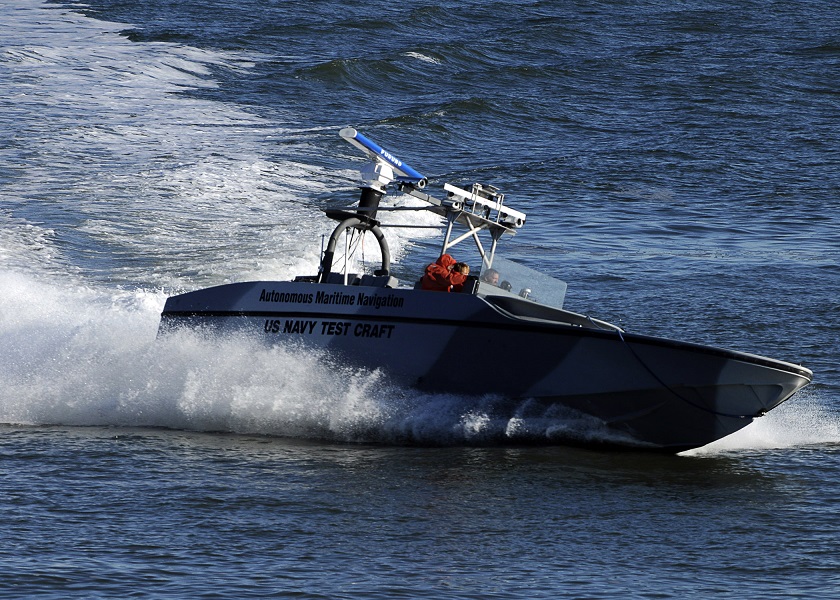This post is also available in:
 עברית (Hebrew)
עברית (Hebrew)
The autonomous capabilities of the new Common Unmanned Surface Vehicle (CUSV) have been recently demonstrated by Textron Systems, which collaborated with the US Navy in weaponizing the maritime vessel which is capable of multiple missions.
The vessel is the system of choice for the U.S. Department of Defense’s first USV program of record. Whether in mine-sweeping and neutralization role; intelligence, surveillance and reconnaissance (ISR); harbor security; monitoring or protection, this fourth-generation CUSV is a mature, multi-mission and multi-payload capable vehicle with significant in-water experience, while keeping personnel out of harm’s way, according to the company’s youtube channel.
During the demonstration, Naval Surface Warfare Center Dahlgren Division (NSWCDD) engineers explained how the weapon technologies they developed will be evaluated for integration with Textron Systems’ CUSV to create a new modular autonomous weapon system to impact the Fleet’s maritime operations. There is currently no program or acquisition in place to implement these efforts, as they are in the early development stages, reports militaryspot.com.
The Navy and Textron Systems plan to prove the developmental concept that combines direct and indirect fire capability with a gunfire demonstration later this year, followed by a live missile shoot in 2019.
“We are creating a modular surface and expeditionary warfare payload with a gun and a missile weapon system to be evaluated for integration onto the common unmanned surface vehicle,” said Kevin Green, NSWCDD technical lead for Ship-to-Shore Precision Engagement Integration and Prototype. “This payload could enable warfighters to counter fast attack craft and fast inshore attack craft and it could provide ship-to-shore fire support for expeditionary and special operations forces.”
For surface and expeditionary warfare missions, warfighters could use a modular, plug and play unit designed to fit the CUSV mission bay. This mission module includes sensors for targeting, a weapon station with a gun, and a launcher system for missiles.
NSWCDD engineers determined that weaponizing a USV with both direct and indirect fire capability could expand the USV mission portfolio to include surface warfare, maritime security, and maritime interdiction operations in addition to special operations forces and expeditionary forces support.
Sailors and Marines could be able to use the Battle Management System to fire missiles and precision-guided munitions from the CUSV. They would use the autonomous system for detection, tracking, and direct fire engagement.


























